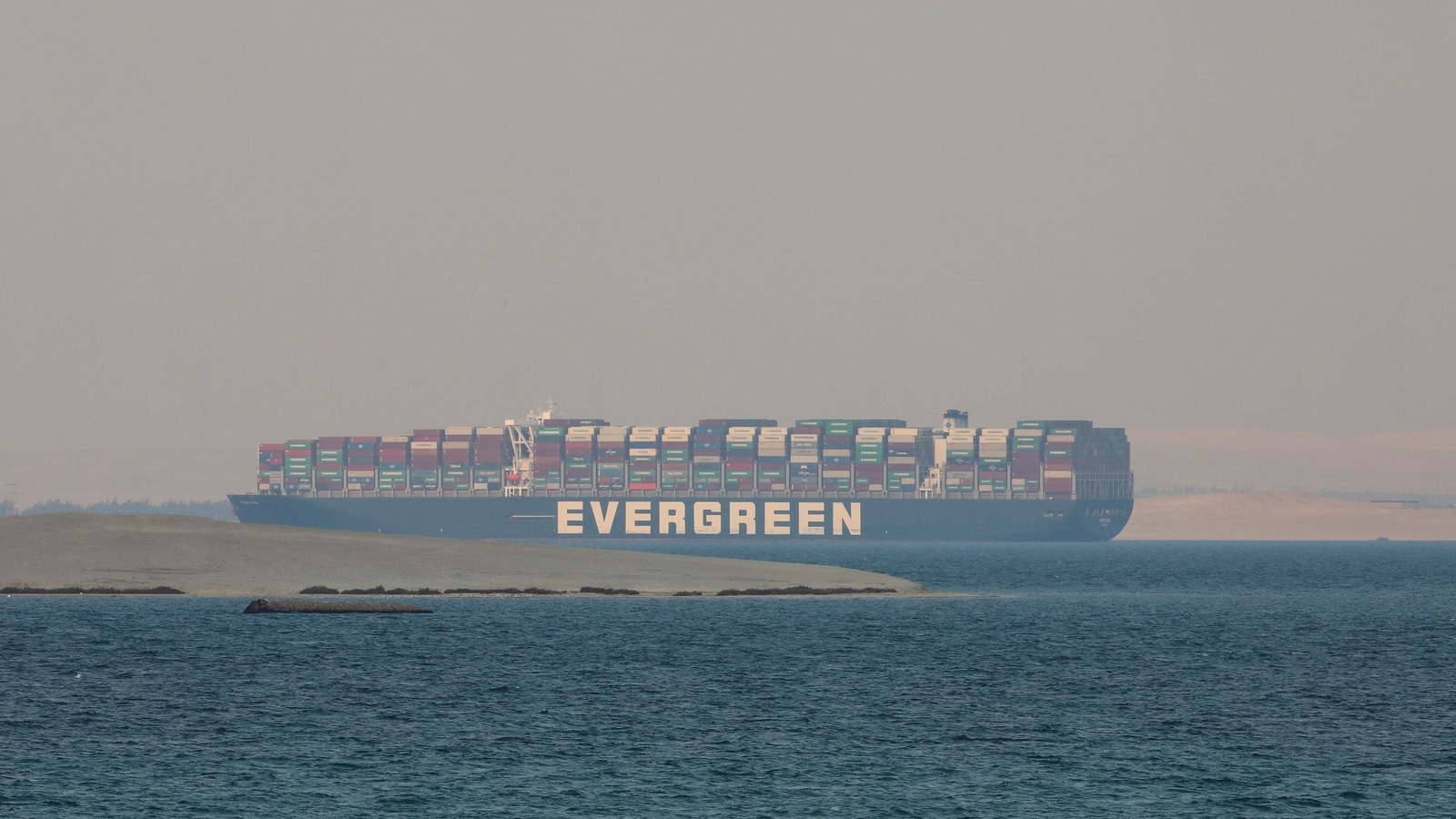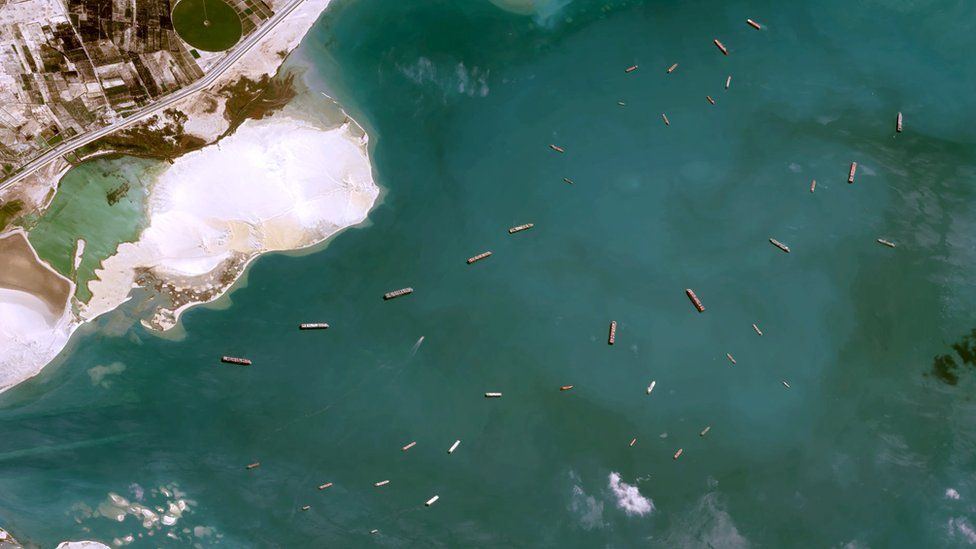The log jam in the Suez canal last month produced a spike in ship pollution that was visible from space.
When the container vessel Ever Given got itself wedged in the famous waterway, it forced hundreds of other ships wanting passage to park up.
This helped push the concentration of sulphur dioxide (SO2) in the air to five times normal levels on the Mediterranean side of the canal.
SO2 is a by-product of the type of heavy fuel oils burnt by ship engines.

The International Maritime Organization (IMO) is on a drive currently to limit emissions of the gas because of the deleterious effects it can have on the environment and human health.
More than 350 ships got caught up in the Suez blockage, which ran from 23 to 29 March.
Most were anchored at the canal’s northern end, in the Med. And while their main engines would have been turned off, the vessels were still running auxiliary power units and boilers – in what’s called “hotelling” mode.
This led to a build-up of SO2 in the atmosphere locally that was observed by the EU’s Sentinel-5P satellite.
The spacecraft, managed by the European Space Agency, carries a sensitive spectrometer called Tropomi, which can detect a range of trace pollutants, including sulphur dioxide.

“When the ships are moving, when they’re actually cruising, they are emitting more sulphur dioxide than when they’re just hotelling. But it’s the fact that we have so many ships collected together, all parked, that we get to see this signal in the Sentinel-5P satellite data,” explained Dr Maryam Pourshamsi, an Earth Observation specialist with Airbus Defence and Space.
The spike quickly dissipated when the Ever Given was freed and traffic started moving through the canal once more.
The IMO introduced a new regulation last year requiring ships to use cleaner fuel oils, with the aim of reducing annual sulphur emissions by more than 70%. Efforts must now be made to demonstrate industry’s compliance. Satellites can play a role in this.
Later this decade, even tighter restrictions on sulphur emissions are likely to be implemented in the Med itself. The sea hosts some of the greatest ship activity in the world.

Suez’ importance is well recognised – about 12% of total global trade moves through the canal. But high traffic is also seen in other narrow entry/exit corridors such as the straits of Gibraltar, Dardanelles and the Bosphorus.
An emission control area for the Mediterranean would limit sulphur emissions to a fifth of that permitted under even the new IMO regulation.
Sulphur oxides in the air contribute to respiratory, cardiovascular and lung disease. When this sulphur combines with water in the atmosphere, it will acidify rain which can damage crops, forests, and aquatic species.
The shipping industry has a separate commitment to reduce its emissions of greenhouse gases by 50% by 2050 compared with 2008 levels.